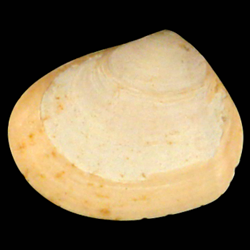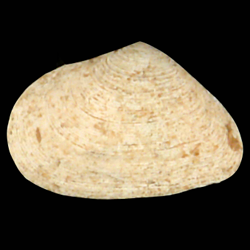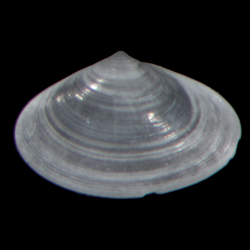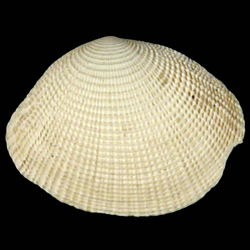
Semelidae
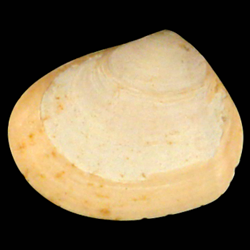
- Phylum: Mollusca
- Class: Bivalvia
- Order: Imparidentia
- Family: Semelidae
Overview
Common name: Semele clams
Key morphological features: The Semelidae range in size up to ~120mm. The shells can be thin or robust depending on the species, and are generally equivalve, compressed and subcircular to oval in outline, with a slight posterior gape. The anterior end of the shell is often more rounded while the posterior is more acute. The shell is composed of aragonite, and exterior sculpture can be absent or consists of delicate commarginal ribs. In some species the commarginal ribs are crossed by radial ornamentation, producing a cancellated pattern. Valve interiors have a pallial line with a deep sinus and smooth interior shell margins. Species of Semelidae are weakly heteromyarian, but which adductor muscle scar is larger is species dependent. The hinge plate can be narrow or wide and contains one or two cardinal teeth, as well as anterior and posterior lateral teeth in most species. Source: Mikkelsen, P.M., and Bieler, R. 2008. Seashells of Southern Florida: Bivalves. Princeton, New Jersey: Princeton University Press. 503 pp.
Geological range: Eocene to Recent (Mikkelsen & Bieler, 2008).
Geographic distribution: A distributional map for modern Semelidae may be accessed from OBIS. A distributional map for ancient Semelidae may be accessed from the Paleobiology Database.
Diversity: There are 161 recognized living species of Semelidae and 16 genera (WoRMS database, unvetted). The Paleobiology Database recognizes 7 fossil genera and 154 fossil species of Semelidae (unvetted).
Paleoecology: The Semelidae are infaunal, marine, bivalves that both deposit and filter feed using long siphons. The Semelidae can be found in soft sediment benthic habitats worldwide. Source: Mikkelsen and Bieler (2008).
Phylogenetic status: Paraphyletic. The molecular phylogenetic analysis by Taylor et al. (2007) supports the paraphyly of Family Semelidae.
